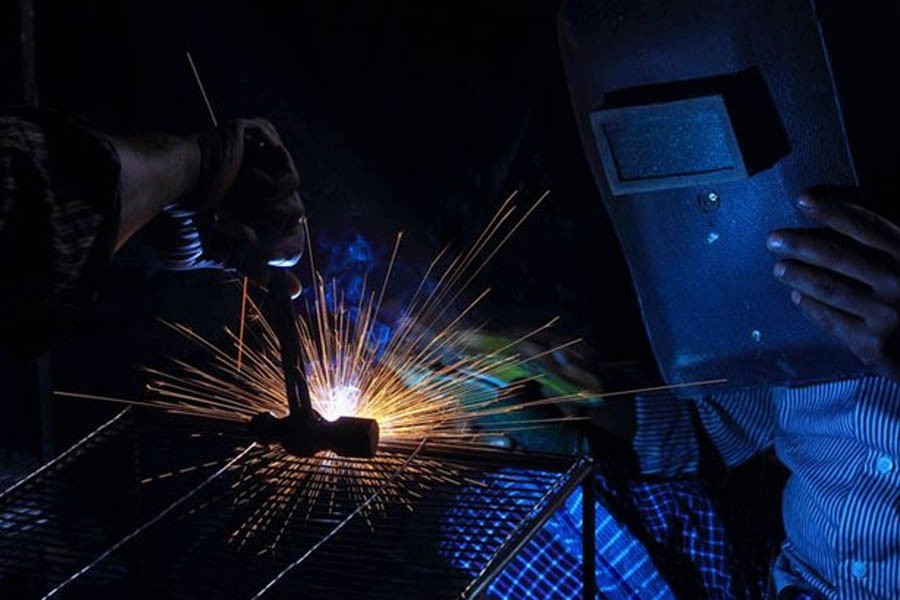Bangladesh has recognised the light engineering (LE) as a key critical for achieving its development targets, but the country is yet to explore most of its potential. We are way behind the rest of the world in excelling in the LE sector.
However, the country’s cross-industry small and medium enterprises (SMEs) make a substantial contribution to gross domestic product (GDP), thanks to the supportive role of the LE as we no longer have to worry much about small machinery and spare parts. Big industrial units are also shifting their interests in view of their future wellbeing. Because both industries and farm sectors now rely on manufacturing of a wide range of spare parts, casts, molds and dies, fittings, and light machinery. Thus our capacity to substitute imports is being raised and the LE sector is gaining momentum.
Lathe machines are one of the oldest machine tools for jobs such as cutting, drilling, deforming, turning, facing, sandling, and knurling and they are the integral parts of our LE industry.
Problem
Bangladesh is yet to start and normalise the use of automated CNC (computer numerical control) blathe machines. The workshops from different LE hot zones like Dholaikhal, and Jinjira in Dhaka, and at different corners of the country, are still dependent on manual lathe machines. They are far less efficient compared to our domestic and international demands.
Automatic lathes are highly versatile machines designed for efficient and accurate production, with fast cycle times. Not only do they perform without much interference from a human operator, but they also allow complex operations. So, the new automated machines can make a huge impact on the industrial output of the light engineering sector.
Solution
A market survey performed by Micromax Technologies, a private company, on around 100 light engineering workshops from Jinjira has presented certain findings which in turn show a huge opportunity to accommodate a paradigm shift in this industry. The workshops surveyed are interested in taking part in the change-making process with the introduction of automatic CNC lathe machines. Because automatic CNC lathes are high speedy; a trained operator can look after more than one machine at a time; the working cycle that is repeated to produce duplicate parts is fully automatic; all working and idle operations are performed in a definite sequence which is set up to suit a given work; demands are high in the present market, and if a fraction of the international demand can be attracted there needs no turning back.
Drawbacks
The automatic CNC lathes are of a very high price, in a range of Tk 1.5 and Tk 5.0 million. In specialised cases, the price even goes up to Tk 10 million. So, the required initial fixed cost is quite high, which is out of the reach of most of the workshops. Though there are demands in the market, their variable revenue pattern and need for working capital make them unable to afford such machines.
True, the workshops’ efficiency will be increased all of a sudden, but an instant rising trend in demand might remain absent which will make the workshops or businesses instantly vulnerable.
The supply of trained operators for automated CNC lathes is very low. At a certain point, there is a possibility that the new automated machines are sitting idle and workshops are counting losses as they couldn’t find or manage trained operators.
Overcoming the Drawbacks
The ministry concerned can take an initiative to make a list of potential buyers (workshops/businesses) of the automatic CNC lathes. The listed businesses may receive the machine as a loan from the government. The financing model can be as follows:
- The international manufacturer/supplier may make the sales in credit which will be repaid by the government in installments. The government may ensure that all businesses make the payments duly to a designated account.
- The government may pay the manufacturer/supplier at the time of transaction. The businesses will be liable to the government and duly make installment payments.
When the sample workshops from the target area were asked about the process, they assured that there would be no problem with the repayment should the government take such an initiative.
However, the scope for corruption and other mismanagements lies in the selection of workshops. So, after issuance of the circulation, all workshops may be interested to have a machine for themselves if the previous financial model is in place. Maintaining a balance between demand for machines and capacity of workshops will be a critical issue for this intervention.
To solve the problem of scarcity of trained operators, a quick initiative may be taken to train the required number of operators. One should remember that these CNC lathe operators will not replace the traditional lathe operators; they will be an addition to the existing workforce. Because, as CNC lathes are money makers, they will not be used for small jobs. Traditional manual lathes will always be there for taking care of small jobs to be carried out by the operators.
If implemented, this shift in technology will not only raise capacity and efficiency, it will also increase the workshops’ revenue. They will then be able to pay more direct and indirect taxes. The changes will attract international buyers and create scope for producing ‘machine operators’ of international standards. Such intervention will also address Goal 8 (Decent Work and Economic Growth), and Goal 9 (Industry, Innovation, and Infrastructure) of the Sustainable development Goals.
Hossain Mohammed Omar Khayum is a researcher at the Centre for Peace and Justice (CPJ), BRAC University.


